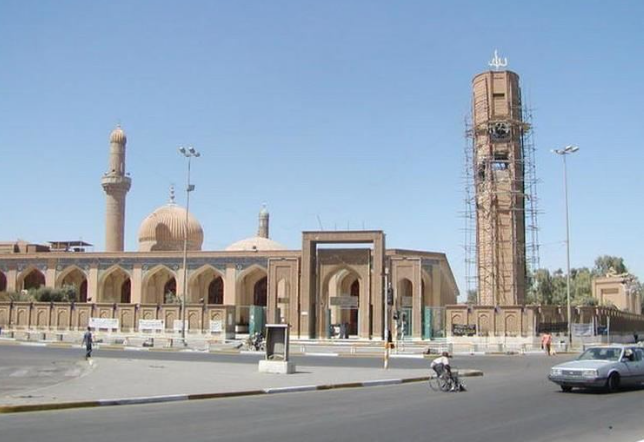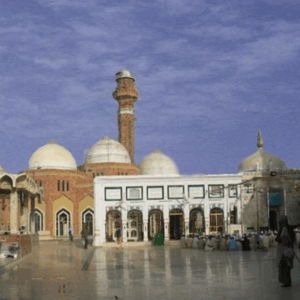The Life and Legacy of Imam Abu Hanifah
Imām Abū Ḥanīfah (699–767 CE / 80–148 AH) is recognized as the founder of the Hanafi school of fiqh, the most widely followed school in the Sunni Muslim world. Revered as al-Imām al-A‘ẓam (“The Great Imam”), he was the earliest of the four major imams and the first to systematically define the principles of uṣūl al-fiqh that would shape Islamic jurisprudence for centuries. Although later imams—Imam Malik, Imam al-Shāfi‘ī, and Imam Ahmad ibn Hanbal—would codify their own schools, all benefited from the scholarly foundations laid by Abu Ḥanīfah. He also studied with Imam Ja‘far al-Ṣādiq, further connecting him to the deep spiritual scholarship of Ahl al-Bayt.
Early Life and Ancestry
Abu Ḥanīfah was born in Kufa, Iraq, during the rule of the Umayyad Caliph ‘Abd al-Malik ibn Marwān. His father, Thābit bin Zūṭa, was a well-respected merchant originally from Kabul, Afghanistan. The family lineage, according to several historians, was of Persian or Central Asian origin. Abu Ḥanīfah grew up in a multicultural, intellectually vibrant environment. Kufa was a crossroads of diverse peoples—Arabs, Persians, Afghans, Indians, Turks, and even Chinese traders—an environment that enriched him with exposure to many cultures, languages, and philosophical currents. This diversity influenced his inclusive understanding of Islamic law. His famous statement, “The faith of a Turkic convert is equal to the faith of a resident of Madinah,” reflects this expansive worldview.
Connection to the Companions of the Prophet
Although born after the Prophet Muhammad ﷺ, Abu Ḥanīfah lived during the era when many Companions were still alive. Companions such as Anas ibn Mālik and Abū al-Ṭufayl lived until Abu Ḥanīfah’s youth. Classical biographers record that he transmitted hadith from as many as sixteen different Sahaba, giving strong roots to his scholarship and jurisprudence.
Scholarship and Intellectual Brilliance
Imam Abu Ḥanīfah was not only a jurist but a multidimensional scholar. He was a mathematician with advanced understanding of measurement, density, and geometry. As a philosopher, his method of debate—posing questions, exploring contradictions, and synthesizing conclusions—remarkably resembles the dialectical reasoning later formalized by Hegel in the 17th century. More than a millennium earlier, Abu Ḥanīfah used similar methods to arrive at balanced legal rulings.
Despite his brilliance, he lived humbly among ordinary people. He was a wealthy merchant, yet deeply charitable, honest, and connected to the community. He refused government positions repeatedly, even under pressure, maintaining his independence and integrity.
The Architect of Baghdad
One of the lesser-known aspects of Imam Abu Ḥanīfah’s legacy is his major role in the planning of the city of Baghdad. When the Abbasid dynasty came to power in 750 CE, Caliph al-Manṣūr sought a new capital. He commissioned Abu Ḥanīfah to survey and design the layout for the future city. The Imam selected a location on a bend of the Tigris River for strategic and defensive advantages.
He then mapped out the palace, mosque, markets, residential quarters, and defensive walls. To demonstrate the full city layout to the Caliph, he sprinkled cotton seeds along the boundary lines and ignited them during a dark night. The glowing pattern revealed the city’s geometric design from a high observation tower—a brilliant engineering demonstration rarely acknowledged in history books.
He also introduced precise standards for brickmaking, requiring uniform size, weight, and stacking methods. This was an early application of measurements and density principles in large-scale construction—centuries before the modern engineering sciences.
His Daughter, Haneefa
Abu Ḥanīfah’s title is derived not from the usual Arabic custom of naming after a son, but from his daughter Haneefa. She was widely respected for her intelligence and piety and even taught students in her own study circle. A well-known story describes how she used cups of milk poured into one jar to illustrate the unity of a community—teaching that individual contributions merge into a greater whole.
His Character and Heritage
The Imam came from a family known for honesty and God-consciousness. A famous story recounts how his father, Thābit, once ate an apple that had floated down the river and later walked upstream to locate the owner so he could ask forgiveness. Impressed by his sincerity, the orchard owner offered his daughter—pious, silent, and pure-hearted—in marriage. Their son would become Abu Ḥanīfah, one of Islam’s greatest scholars.
Final Years and Resting Place
Imam Abu Ḥanīfah passed away in 767 CE. It is widely believed that he died under imprisonment due to refusing a judicial post from the Abbasid Caliph, remaining steadfast in his principles. His shrine stands today in the district of al-A‘ẓamiyyah in Baghdad, alongside the flowing Tigris River. Across the river lies the shrine of Imam Musa al-Kāẓim. Legend has it that these two giants of Islamic knowledge “converse spiritually,” saddened by the Shia-Sunni divide, urging unity. A bridge connecting the two districts was named Jisr al-Imāmayn (“The Bridge of the Two Imams”) in their honor.
Legacy
Imam Abu Ḥanīfah remains one of the greatest mujtahideen in Islamic history. His legal methodology prioritizes reason, community welfare, and continuity with prophetic teachings. His school of thought—the Hanafi madhhab—became the dominant jurisprudential tradition across the Ottoman Empire, the Indian subcontinent, Central Asia, Turkey, the Balkans, the Arab world, and beyond. Millions continue to benefit from his scholarship today.
He was not only a jurist, but a philosopher, mathematician, architect, city planner, merchant, and spiritual guide—a truly extraordinary figure whose contributions extend far beyond the realm of law. His life story reflects the richness, depth, and unity of the Islamic intellectual tradition.




